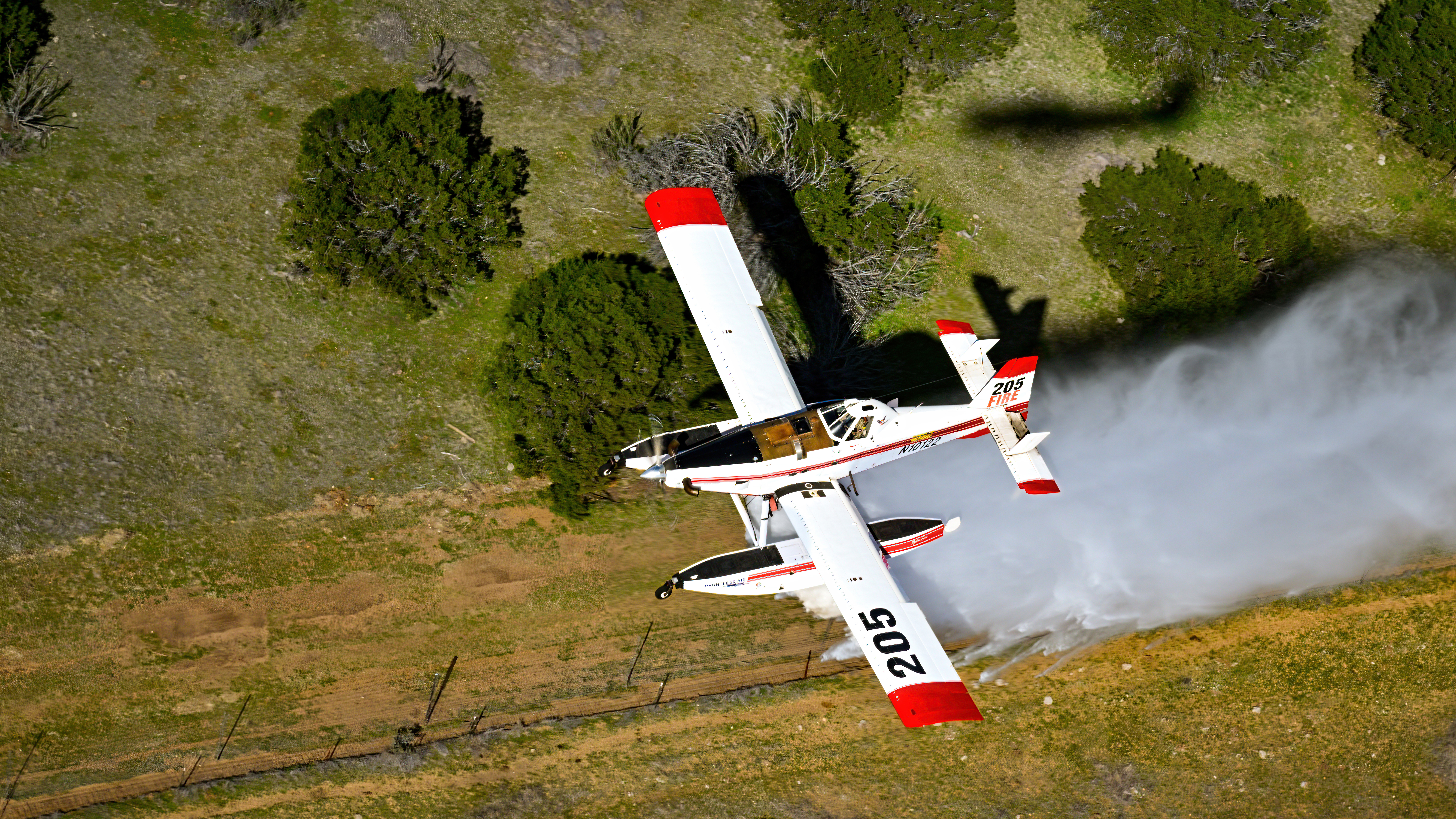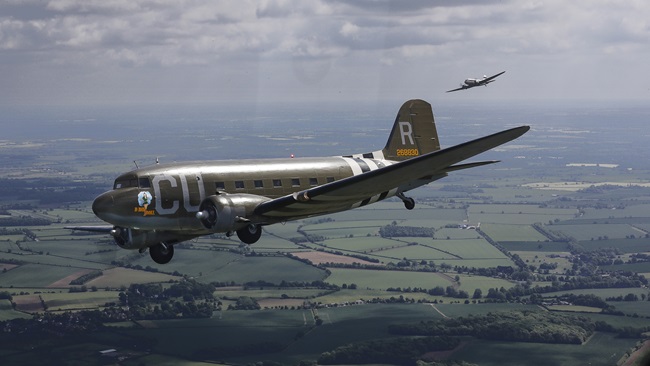Culture of the smallest corps
Flying Twin Otters safely on challenging missions
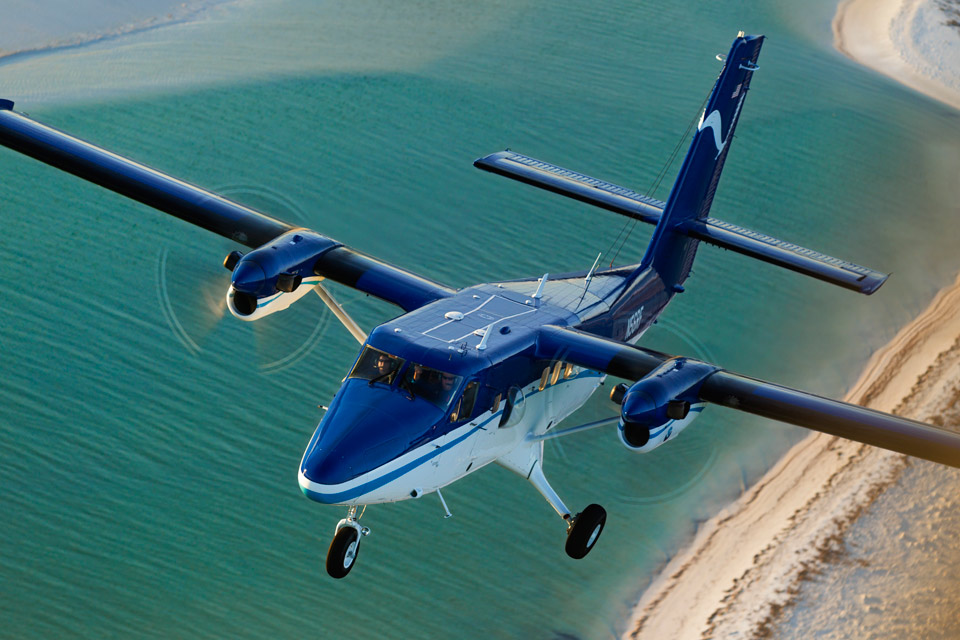 Loaded light for a short flight, the Twin Otter leapt skyward. In the seconds before, a takeoff clearance amendment had been requested and granted—and a pretakeoff checklist completed—as the de Havilland DHC-6 rolled slowly down Runway 24 at Barnstable Municipal-Boardman/Polando Field in Hyannis, Massachusetts. With that done, the pilots, uniformed officers of the National Oceanic and Atmospheric Administration (NOAA), each placed a hand on the power levers, advancing the Pratt & Whitney PT6A engines to full power with a couple of hundred feet of runway already behind them. Still, the agile Otter broke ground before reaching the first taxiway intersection.
Loaded light for a short flight, the Twin Otter leapt skyward. In the seconds before, a takeoff clearance amendment had been requested and granted—and a pretakeoff checklist completed—as the de Havilland DHC-6 rolled slowly down Runway 24 at Barnstable Municipal-Boardman/Polando Field in Hyannis, Massachusetts. With that done, the pilots, uniformed officers of the National Oceanic and Atmospheric Administration (NOAA), each placed a hand on the power levers, advancing the Pratt & Whitney PT6A engines to full power with a couple of hundred feet of runway already behind them. Still, the agile Otter broke ground before reaching the first taxiway intersection.
The Twin Otter’s short takeoff and landing (STOL) capability, combined with a useful load of 4,400 pounds, has made the de Havilland design—first produced in 1966—a favorite among those who operate in extreme environments, from polar regions to remote jungles. Its versatility, stability, and reliability likewise make it a favorite among the small band of NOAA aviators who have made a scientific workhorse of the venerable Twin Otter.
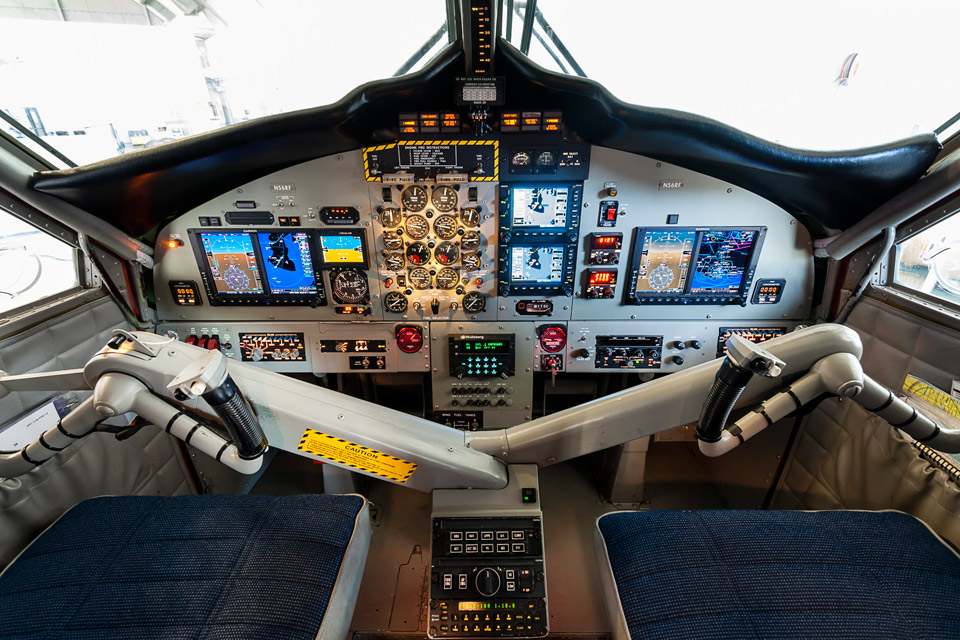 “What I’m looking for is, can that pilot know his limitations in the plane, and make sure that they can circle, in our case, at a safe airspeed—and know when it’s not a safe situation?” Mitchell said, referring to one of the primary maneuvers the Twin Otter pilot must master: tight circles around objects of interest, allowing for good photography and observation by the scientists in the cabin. There can be a thin margin “between flying and not flying,” Mitchell said. “When you’re doing a 50-degree turn at 90 knots, you can turn it over pretty quick.”
“What I’m looking for is, can that pilot know his limitations in the plane, and make sure that they can circle, in our case, at a safe airspeed—and know when it’s not a safe situation?” Mitchell said, referring to one of the primary maneuvers the Twin Otter pilot must master: tight circles around objects of interest, allowing for good photography and observation by the scientists in the cabin. There can be a thin margin “between flying and not flying,” Mitchell said. “When you’re doing a 50-degree turn at 90 knots, you can turn it over pretty quick.”
Co-pilots are expected to be constantly engaged in the aeronautical demands of the moment, ready to take over in an instant if needed. “The co-pilot for the flight is constantly backing up the pilot,” Mitchell says. “We keep ourselves backed up. If there’s any sort of indication of a stall, we train to immediately recover and climb out of that.”
‘I wouldn’t want to give it up’
For most NOAA pilots, the path to the cockpit begins in college, including military academies, with a healthy dose of science and math. For some, it extended through a tour at sea aboard one of the 18 research vessels that the agency operates. Others were commissioned right into the cockpit, although that path depends on demand. Since the Merchant Marine Academy’s Global Maritime and Transportation School closed in 2012, NOAA Corps candidates who make the first cut now begin training at the Coast Guard Academy in New London, Connecticut, mixed into the ranks of the larger service (the Coast Guard has 6,800 officers; NOAA Corps has 321).
NOAA sends pilots to FlightSafety International for aviation training; some come to NOAA with pilot certificates already earned, although the agency has trained promising officers from scratch. Pilots wear their blue flight suits with pride, happy to explain to the curious they are members of the nation’s smallest uniformed service—and not, in fact, the U.S. Navy. It’s a common enough mistake. “We don’t have our own particular uniform,” Halverson explained.
Nearly all NOAA pilots begin their service career flying the Twin Otter. Many, like Cowan, will transition to one or more of the other aircraft in the 10-ship fleet, which also includes the WP–3D Orions and a Gulfstream IV used for high-altitude hurricane reconnaissance.
The Twin Otter remains the first love of most NOAA pilots, who learn to love the distinctive smells of jet fuel and sweat flowing freely inside a survival suit on a warm day. “You never really get away from the Otter,” Cowan said. “I wouldn’t want to give it up, either. It’s a very fun aircraft to fly.”
Video: Fly a Twin Otter mission in this online video.
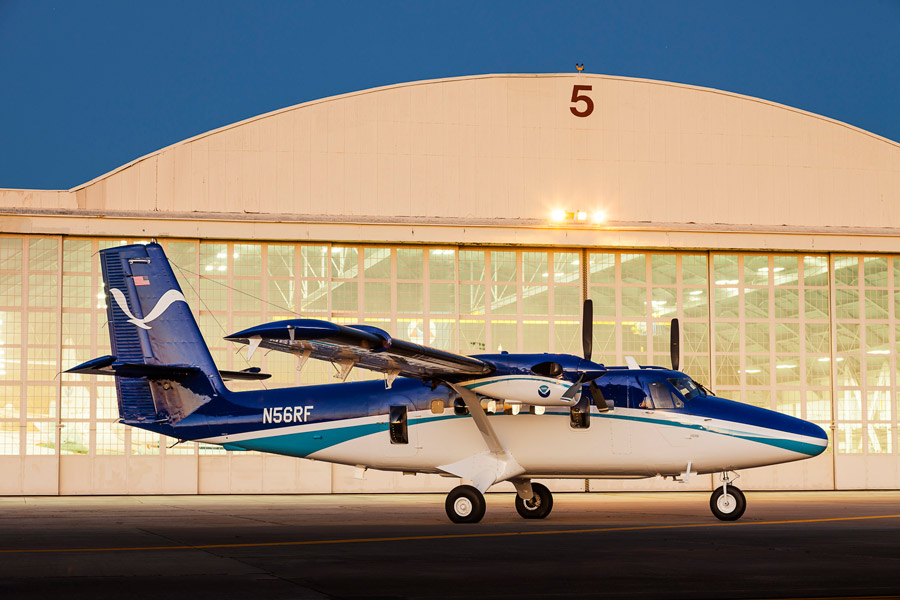
The NOAA Commissioned Officer Corps—or NOAA Corps, as the nation’s smallest uniformed service is known—operates four DHC-6s that track coastal and offshore wildlife from the Aleutian Islands to the Atlantic Ocean, measure snowpack in the headwater regions of the nation’s major river systems, map coastlines, sample atmospheric composition with an array of sophisticated sensors, and photograph storm damage. NOAA has fitted its Otters with bubble windows that offer passengers, typically scientists, a sweeping view; observers can stretch head and shoulders outside the aircraft’s aluminum skin. Twin Otter missions typically are low and slow; pilots must master the art of maneuvering at the lower edges of the envelope, sometimes in close proximity to terrain.
“None of us really ever want to get away from the Twin Otter because it is that much fun to fly,” said Lt. David Cowan, echoing the sentiments of pilots interviewed at the NOAA Aircraft Operations Center, housed in a cavernous hangar at MacDill Air Force Base in Tampa, Florida, which also is home to the massive and celebrated Lockheed WP–3D Orions painted with hurricane silhouettes. The Twin Otters have no such decoration, although plush toy otters have been stationed inside the windshield—two, of course. “We jokingly call it the flying trapeze, because it literally is so stable at slow speeds,” said Cowan.
That stability is a key to the Otter’s success, allowing NOAA pilots to maneuver within feet of the steep Aleutian cliffs, where winds can blow at hurricane force when there is no such storm in sight.
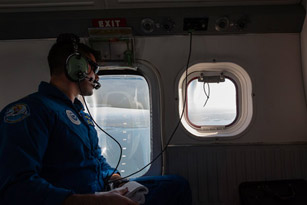
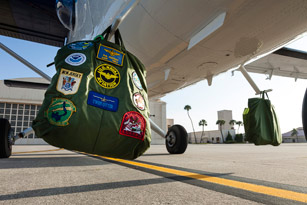
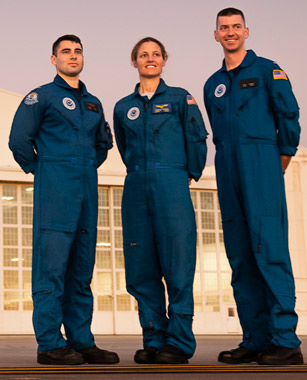
Never safe enough
A safety briefing by Lt. j.g. Kevin Doremus, an ensign at the time he prepared me for a January whale survey out of Hyannis, highlighted the thin margin in which the Twin Otter crews work. Survival suits are worn at all times on such missions, because
if something goes wrong hundreds of
miles offshore at 700 feet above the waves, there will be no time to struggle into one before swimming in the frigid North Atlantic. An inflatable vest is added on top, with webbing and pockets that carry an assortment of essentials, including an emergency beacon.
NOAA has compiled an impressive aviation safety record, with no serious accidents or injuries since the Aircraft Operations Center was created in 1983, despite mission profiles that include flying straight into hurricanes. That record is not taken for granted, and NOAA crews prepare for the worst case with an obsessive attention to detail.
Capt. Randy TeBeest, who was preparing to retire as the commander of NOAA aircraft operations during a 2013 visit, explained the safety culture he worked for 20 years to nurture. “The one thing we keep in mind is that we’re never safe enough. It’s not something we ever want to become complacent with,” said TeBeest, who passed the torch to Capt. Harris Halverson, the current Aircraft Operations Center commander. “That’s a maturation of the organization that I’ve seen over the years.”
The core of the NOAA Corps safety approach is known as “operational risk management,” a dry bureaucratic phrase that might more colorfully be described as flight planning on steroids. Before each mission, risks are systematically assessed and detailed in spreadsheets: wind and weather conditions, proximity to terrain, distance from available alternates, planned altitudes, and the nature of the mission itself. Steller sea lions have a penchant
for narrow Aleutian beaches, where katabatic winds known as williwaws—they have been clocked at more than 100 mph—can make a pilot’s life very interesting. Ask any NOAA pilot about the challenges of the job, and you will hear a thing or two about Alaska’s williwaws.
Photographing the massive marine mammals clustered on those narrow beaches requires delicate maneuvering, banking the aircraft to point the belly-mounted camera on target, while avoiding the volcanic rock just a few feet from the wing tip. That becomes one of the many items detailed in ORM checklists that can swell into binders an inch thick, circulated among the pilots for consideration and feedback. For each risk, a mitigation strategy is devised and refined, if mitigation is possible. The pilots apply decades (centuries, really) of collective aviation knowledge and experience to the task of making dangerous missions as safe as they can be.
Halverson, a U.S. Navy-trained Orion captain accustomed to flying into hurricanes, said general aviation pilots might do well to replicate the process, at least to a degree. “It doesn’t have to be as formal,” Halverson said. “At least think about things before you go flying.”
Teamwork offers another layer of protection, and is drilled into the NOAA Corps culture. Even before pilot and co-pilot grasp the power levers together through the takeoff, as the pilots did departing Hyannis, there is collaboration—on the weather briefing, the flight plan, and decision to launch—and each member of the flight crew is expected to speak up when necessary. Lt. j.g. Robert Mitchell, a Twin Otter instructor and lead point of contact for its operations, said the ideal NOAA Corps pilot is as disciplined as he or she is skilled.


